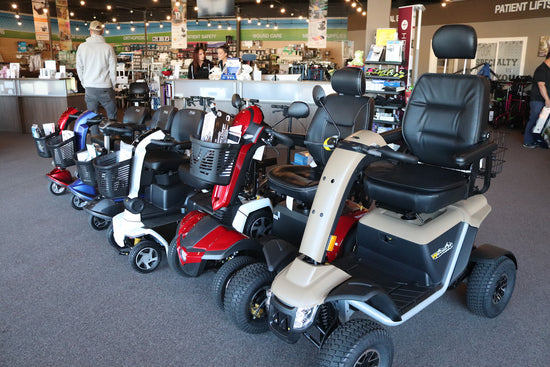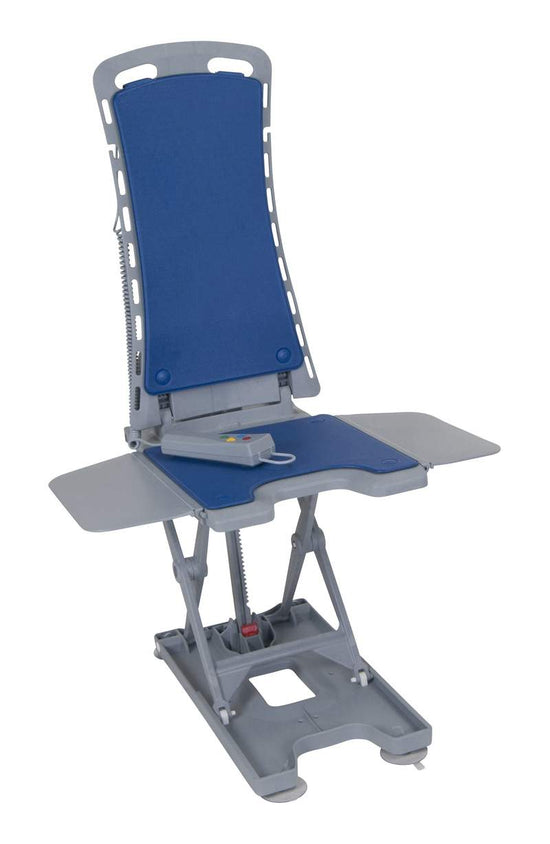As 2025 unfolds, advancements in mobility aids are revolutionizing how individuals with limited mobility maintain independence and enhance quality of life. For people using mobility aids, staying informed about the latest innovations is more than just keeping up with technology—it's about unlocking better functionality, comfort, and confidence in everyday activities.
The rapid pace of development in assistive technology is bringing forth smarter, more intuitive, and highly customized devices that go far beyond traditional support tools. Whether you rely on wheelchairs, walkers, canes, or powered exoskeletons, understanding the newest mobility aid trends can help you make informed decisions that suit your lifestyle and physical needs. This blog explores the most exciting updates in the field for 2025, offering insights into how these cutting-edge solutions are reshaping the way people navigate the world.
Smart Wheelchairs and Integrated Technology
Smart wheelchairs are no longer a concept of the future—they are a reality in 2025, offering enhanced mobility and control for users who need more than manual navigation. These mobility aids now include features such as GPS mapping, collision avoidance sensors, and real-time health monitoring. The integration of smart displays allows users to track speed, battery life, and environmental conditions directly from the chair. These updates not only provide safety but also empower users to be more independent.
Additionally, smart wheelchairs can now sync with mobile apps, allowing users or caregivers to customize settings remotely. Whether adjusting seat positions or scheduling maintenance reminders, this connectivity adds a layer of convenience previously unavailable in traditional mobility aids. Many models also offer voice control, Bluetooth compatibility, and automatic braking systems, greatly reducing the risk of accidents.
For people using mobility aids, smart wheelchairs symbolize a significant leap in personalized care and autonomous living. These devices adapt to user behavior over time, providing increasingly refined assistance with each use. This intelligent evolution is reshaping the landscape of assisted mobility and improving the quality of life for countless individuals.
AI-Powered Mobility Aids
Artificial Intelligence (AI) is making waves across numerous industries, and mobility aids are no exception. In 2025, AI-powered devices are enhancing the way people interact with their assistive tools by learning usage patterns and adapting to specific needs over time. These aids can now predict user intentions based on behavioral trends, making navigation smoother and more intuitive.
A prime example is the use of AI in powered walkers and canes, which now come equipped with adaptive gait analysis. These devices monitor how a person walks and make micro-adjustments to assist with balance, speed, and terrain handling. AI is also being used to identify obstacles in real time and suggest alternate paths, helping prevent falls or collisions.
What makes AI-integrated mobility aids especially transformative is their ability to personalize support. Over time, the system learns an individual's preferred walking routes, daily schedule, and health patterns—offering reminders or alerts if anomalies are detected. This level of customization makes AI a game-changer in the mobility aids market, offering not just movement but proactive support and peace of mind.
Lightweight and Foldable Designs for Travel
Mobility aid users in 2025 are demanding more travel-friendly solutions, and manufacturers have responded with a new generation of lightweight, foldable devices. These innovations aim to reduce the hassle of transportation while maintaining durability and functionality.
Some standout features of these travel-oriented mobility aids include:
-
Ultra-lightweight materials such as carbon fiber or reinforced aluminum.
-
One-click folding mechanisms for easy storage in car trunks or overhead bins.
-
TSA-compliant battery packs for powered devices.
-
Compact designs without sacrificing weight capacity or support.
The reduced size and weight make it much easier for users to stay active and travel independently, whether it's a quick trip to the store or a long-distance journey. For people using mobility aids, these portable options eliminate many barriers associated with movement and transportation.
What’s more, many of these models come with detachable parts or modular features, enabling customization without compromising ease of use. With these user-friendly advancements, mobility is no longer confined to one's immediate environment—it expands globally.
Wearable Exoskeletons for Daily Use
Wearable exoskeletons have evolved from clinical rehabilitation tools into everyday mobility aids designed for real-world use. In 2025, these devices are lighter, more comfortable, and powered by smarter control systems. For individuals with limited lower-body strength or partial paralysis, wearable exoskeletons offer a new level of independence.
These suits use motorized joints and sensors to detect natural movement intentions, amplifying the user’s own muscle power to facilitate walking, standing, or even climbing stairs. Recent models are slim enough to be worn under clothing and come with rechargeable batteries that provide several hours of mobility on a single charge.
One of the most impressive features is real-time feedback. Through built-in sensors, these devices monitor posture, stride length, and balance, offering subtle corrections to improve walking patterns. The exoskeleton not only assists movement but also encourages rehabilitation by strengthening underused muscles over time.
As these tools become more affordable and widely available, they hold the promise of restoring freedom to people who have been confined by their physical limitations. For mobility aid users seeking greater autonomy, wearable exoskeletons represent an empowering breakthrough.
Enhanced Battery Life and Charging Innovations
Battery life has long been a concern for users of powered mobility aids, but 2025 brings several key advancements that address this issue directly. Today’s mobility aids are equipped with high-efficiency lithium or graphene-based batteries that offer longer use between charges—some extending up to 48 hours depending on activity levels.
New charging innovations are also transforming user convenience. These include:
-
Wireless charging pads for hassle-free recharging.
-
Solar-powered backup systems for outdoor use.
-
Fast-charging ports that restore full power in under an hour.
-
Modular battery packs that can be swapped on the go.
These improvements significantly reduce the stress and limitations associated with power loss. Users no longer need to plan their day around charging access, allowing for greater spontaneity and freedom. For people relying on mobility aids, these upgrades translate to more consistent performance and fewer disruptions in daily life.
Manufacturers are also investing in battery monitoring apps that notify users of energy levels and health, ensuring devices are always ready when needed. The combination of better battery life and smarter charging options marks a pivotal moment in the evolution of assistive technology.
Voice-Control and Hands-Free Navigation
Voice-control functionality is increasingly standard in mobility aids, offering intuitive, hands-free navigation options that enhance both safety and ease of use. In 2025, mobility devices come equipped with advanced voice recognition systems that allow users to issue commands like "move forward," "turn left," or "stop" with minimal effort.
This technology is especially valuable for individuals with limited upper-body mobility or dexterity. Beyond basic movement, some devices can now respond to more complex instructions such as setting navigation destinations, adjusting speed, or syncing with smart home systems for seamless environment control.
Hands-free systems aren’t limited to voice alone. Some models also incorporate gesture recognition, facial movement sensors, or even eye-tracking controls to help users operate their mobility aids without physical strain. These innovations create a safer, more accessible experience for users of all ability levels.
For people using mobility aids, the ability to control movement with natural cues fosters greater autonomy and less reliance on caregivers. The result is a more dignified, user-centric approach to assisted living—one that embraces technology to truly empower the individual.
Staying current with the latest trends in mobility aid technology can significantly improve your comfort, safety, and independence. From AI-powered devices to wearable exoskeletons and enhanced battery life, 2025 is shaping up to be a transformative year for people using mobility aids.
If you're ready to explore cutting-edge mobility solutions, visit Everything Medical, your trusted provider of Home Medical Equipment and Supplies in Redding, California. Whether you're searching for the latest smart wheelchair or lightweight travel gear, Everything Medical offers personalized service and expert guidance to help you find exactly what you need. Empower your mobility—today and into the future.




